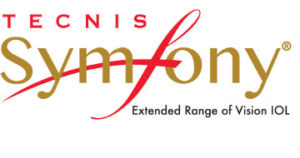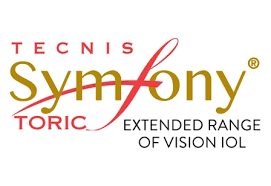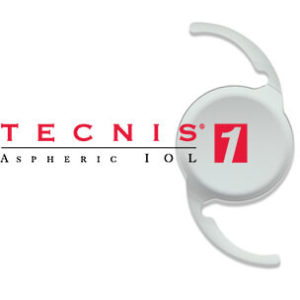No Matter Your Lifestyle, There’s An Intraocular Lens Designed To Fit Your Unique Visual Needs And Priorities.
PanOptix Trifocal Lens
We are excited to now offer the PanOptix trifocal IOL! The PanOptix lens is the only trifocal lens with FDA approval. For more information, please visit our PanOptix Trifocal IOL page.
TECNIS Intraocular Lenses
Until recently, life without reading glasses or bifocals was not an option for most cataract patients. You now have that option.
The family of Tecnis intraocular lenses is a unique technological innovation that can provide you with enhanced image quality and a full range of vision including near, far, and everywhere in between.
These lenses can provide increased independence from reading glasses or bifocals.
Traditionally, when a cataract develops (cloudy lens), the human lens is normally replaced with an artificial intraocular lens inside the eye.
This lens is usually focused on distance vision and the patient needs to wear reading glasses for all near tasks.
Through advancements in lens technology, we now have intraocular lenses available that can provide you with a range of vision (near through distance) enabling a high degree of freedom from spectacles.
The Tecnis Symfony® intraocular lens provides a full range of functional vision for patients who have a strong desire to significantly decrease their dependence on glasses and contacts.
The Lens Designed for Everyday Life
Compare the following images. Image A demonstrates what you might see with a traditional implantable lens. Although distance vision is clear, notice how the phone screen, hand, and near objects are very blurry.
Now compare that with Image B with TECNIS Symfony® IOL. TECNIS Symfony® IOL provides high-quality continuous vision at any distance.

Before IOL

After IOL

TECNIS Symfony® IOL is the first lens of its kind to combine two unique technologies for outstanding visual performance: an Extended Depth of Focus IOL provides a continuous range of high-quality vision from near to far and points in between and may reduce the frequency of wearing glasses.

Full Range Of Continuous Vision With Astigmatism Correction.
Astigmatism is a condition; in which both distant and near objects appear blurred. The cornea and lens of the eye are ideally spherical.
When one or both are curved more steeply in one meridian than another, the optics take on a toric shape, somewhat like an American football.
This uneven curvature prevents light rays from focusing on a single point on the retina, blurring the visual image somewhat like a funhouse mirror.
Astigmatism often occurs in combination with myopia (nearsightedness) and hyperopia (farsightedness).

The Tecnis Symfony Toric intraocular lens compensates for corneal astigmatism as well as a range of continuous vision including distance and near.
It has two meridians of different power, which can be aligned with the steep and flat meridians of the cornea.
While no guarantee can be made as to the final result, there is a better chance you will be able to see clearly in the distance and near without glasses if a Symfony Toric lens is implanted.
The Tecnis Toric intraocular lens compensates for corneal astigmatism. This lens does not allow for continuous vision including near but can provide exceptional distance vision.
It has two meridians of different power, which can be aligned with the steep and flat meridians of the cornea. While no guarantee can be made as to the final result, there is a better chance you will be able to see clearly in the distance without glasses if a toric lens is implanted.

Standard monofocal lens implants have a single point of focus. When a standard lens is implanted, the patient usually chooses before surgery was to have their eye focused after surgery. Most patients choose distance vision, and they wear reading glasses after surgery.
Some patients choose to be nearsighted; they wear distance glasses after surgery. While no guarantee can be made as to the final result, there is a good chance you will be able to see clearly in the distance without glasses providing you don’t have astigmatism.

